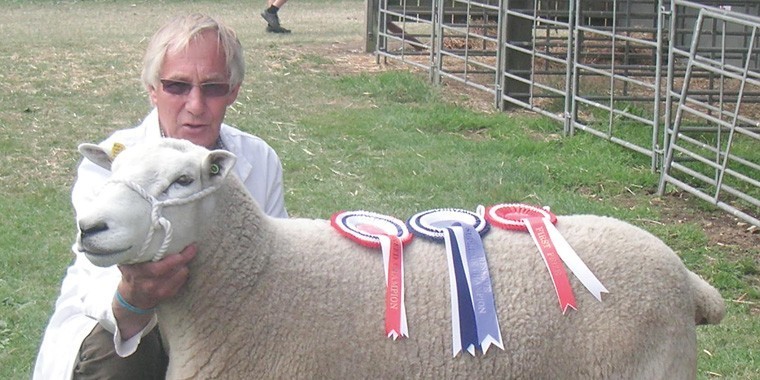I mowed my lawns more times in the six weeks leading up to Christmas than I have since the start of 2016.
Just when we get to the point when it looks as if the grass is going to start growing for the sheep, the weather changes and it stops. Since the end of January I have been carrying a bit of hay to my ewe tegs and they are a very good barometer of grass growth. As the grass starts to grow, their hay consumption decreases, but just when I think that it is time to stop giving them hay, consumption goes up again. But not because they are looking for something a bit dryer because of lush grass growth – quite the contrary, because the grass growth has slowed once again.
At this time last year (22 April) we were in the middle of a spell of weather dominated by high pressure with day time temperatures in excess of 20 centigrade. Temperatures today and for the next few days are predicted to peak at 11°C. The high pressure and clear skies last year did mean that we had some night frosts, but day time temperatures were such that soil temperatures were on a steady rise. A couple of night frosts this week and minimum temperatures forecast at between 1° and 3°C for the next few days will be working in the opposite direction.
Many producers that I have spoken to over the past week are chasing grass around the farm. For a fortunate few the grass seems to be growing to the sheep and for an unfortunate few, particularly on some of the heavier soils that are laying wet, ewes and lambs are still being housed, waiting for conditions to improve so that they are able to turn out. On the bright side at least things have dried out a little recently, which should help lift soil temperatures – although, as some arable producers have discovered, you don’t have to go down very far to find more than enough moisture. However, until there is a good wedge of grass in front of my ewes and lambs I shall certainly keep providing my pedigrees with a little bit of hard feed. Some of those feed cost savings made before lambing are now being gradually eroded by the lack of grass.
In spite of the rather indifferent weather, soil temperatures are certainly high enough to have triggered the first nematodirus warnings of the season for the South East. This is currently yellow (low risk) for most of the region but rising to amber in some areas and for a limited area north west of London to red (severe risk). The Sustainable Control of Parasites in Sheep website does provide detailed and up to date information, which producers are able to access, easily and free of charge. Young lambs that are starting to graze are very vulnerable to a sudden and dramatic rise in nematodirus, a situation, which if not addressed fairly quickly can easily result in lamb deaths. Fortunately this is a problem that can be dealt with relatively easily using “white” wormers, which are a cheap and effective control measure. But don’t forget to rotate your wormer groups for the rest of the season.
On the subject of wormers, I moved to using a long acting injectable wormer for my ewes this lambing. I lamb outside but will – once ewes have cleaned their lambs and bonded – pen ewes and lambs up inside for 24 to 48 hours before moving them onto the lambed ewe paddock. Before they are turned out from the mothering pens every ewe is wormed, a process that I have found so much easier this year using an injectable wormer. The whole process takes seconds, ewes are wormed with the correct dose before they know it with no fuss and no stress.
The injectable wormers have the additional advantage of being long acting and will continue to kill worm larvae as the ewes pick them up from the pasture for three to four weeks after treatment, thereby helping to reduce pasture contamination. The latter is a significant bonus for someone that has only sheep and does not enjoy the luxury of clean grazing. It is not a cheap option, but I intend giving the ewes a second dose in a few weeks time, six to eight weeks after lambing, so that they can continue to “hoover” up and kill worm larvae. I hope this strategy will, over time, significantly reduce levels of pasture contamination, increase lamb growth rates as worm challenges decline and reduce (but not eliminate) the need for worming lambs.
Another little pest that is appearing in increasing numbers again are midges, just as a reminder that we do have Blue tongue, now well into northern France with the nearest restricted zone to us north west of Paris, not much more than 150 miles from Calais. As the season goes on the risk of it crossing the Channel increases quite significantly. We really do need to be proactive not reactive: ask your vet about appropriate prevention/control measures.




